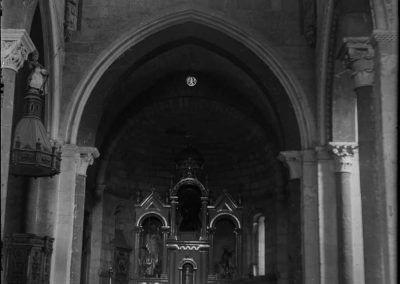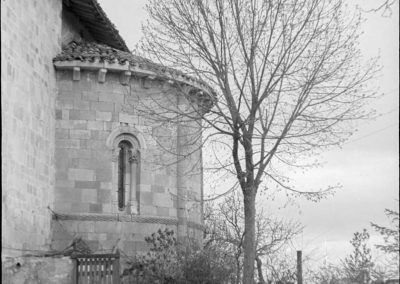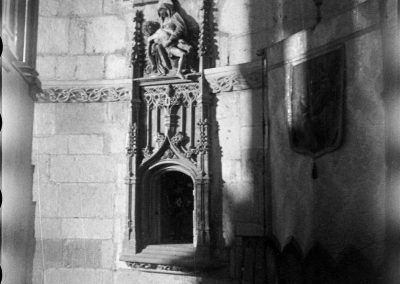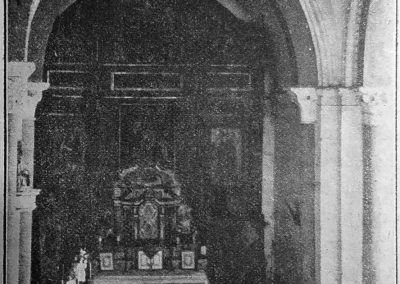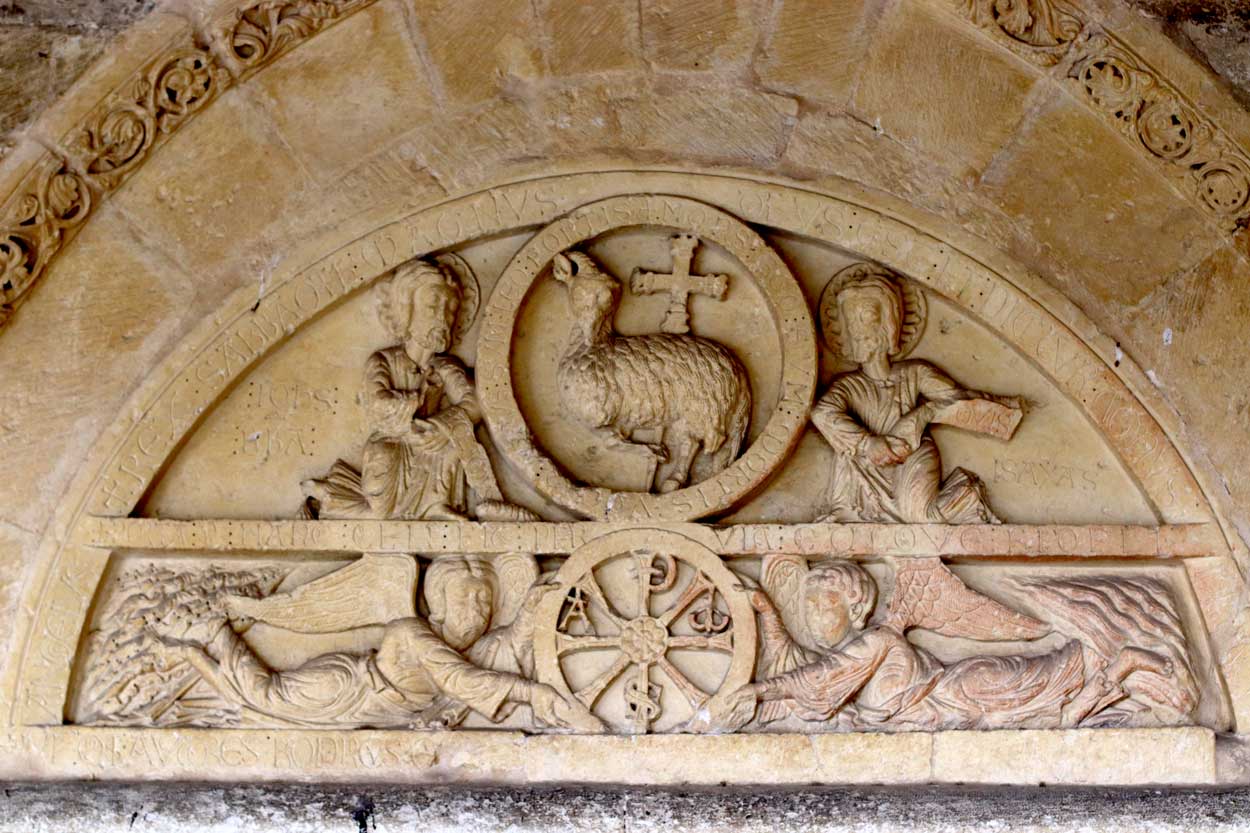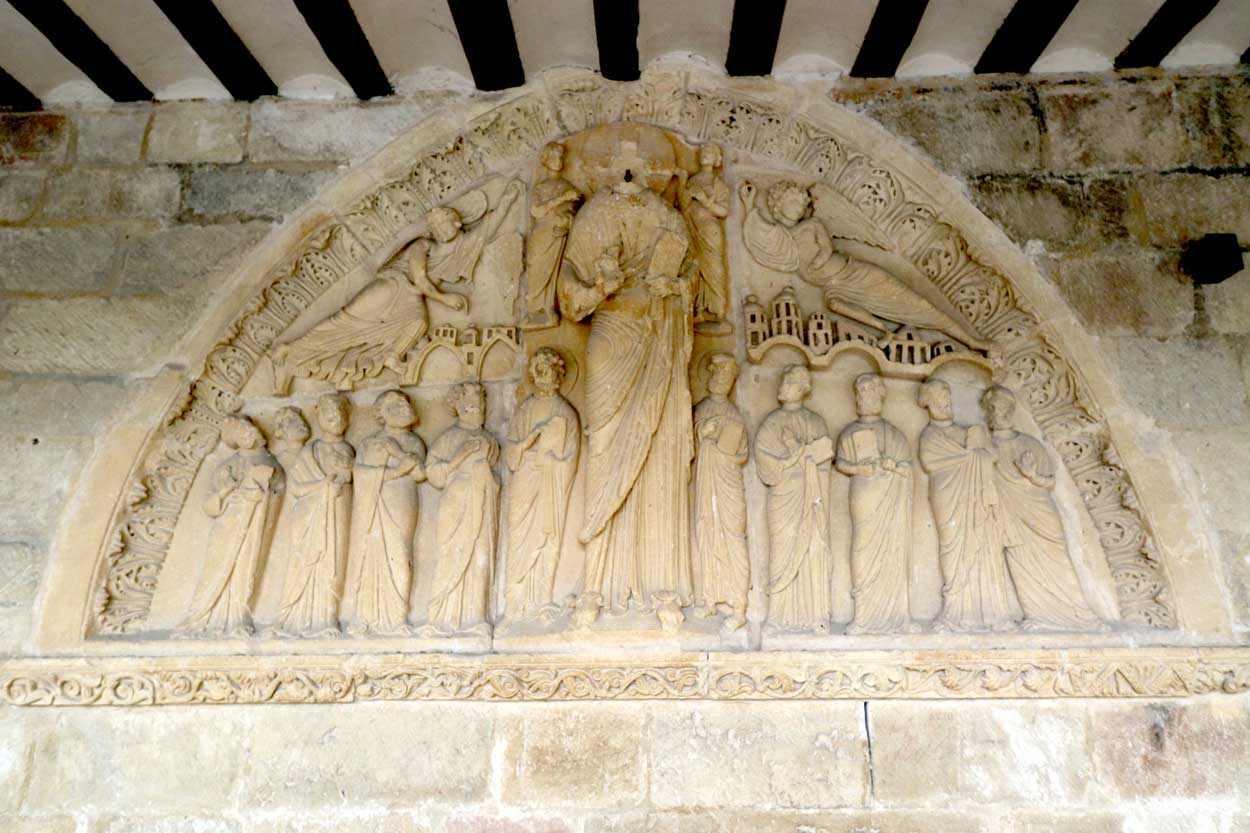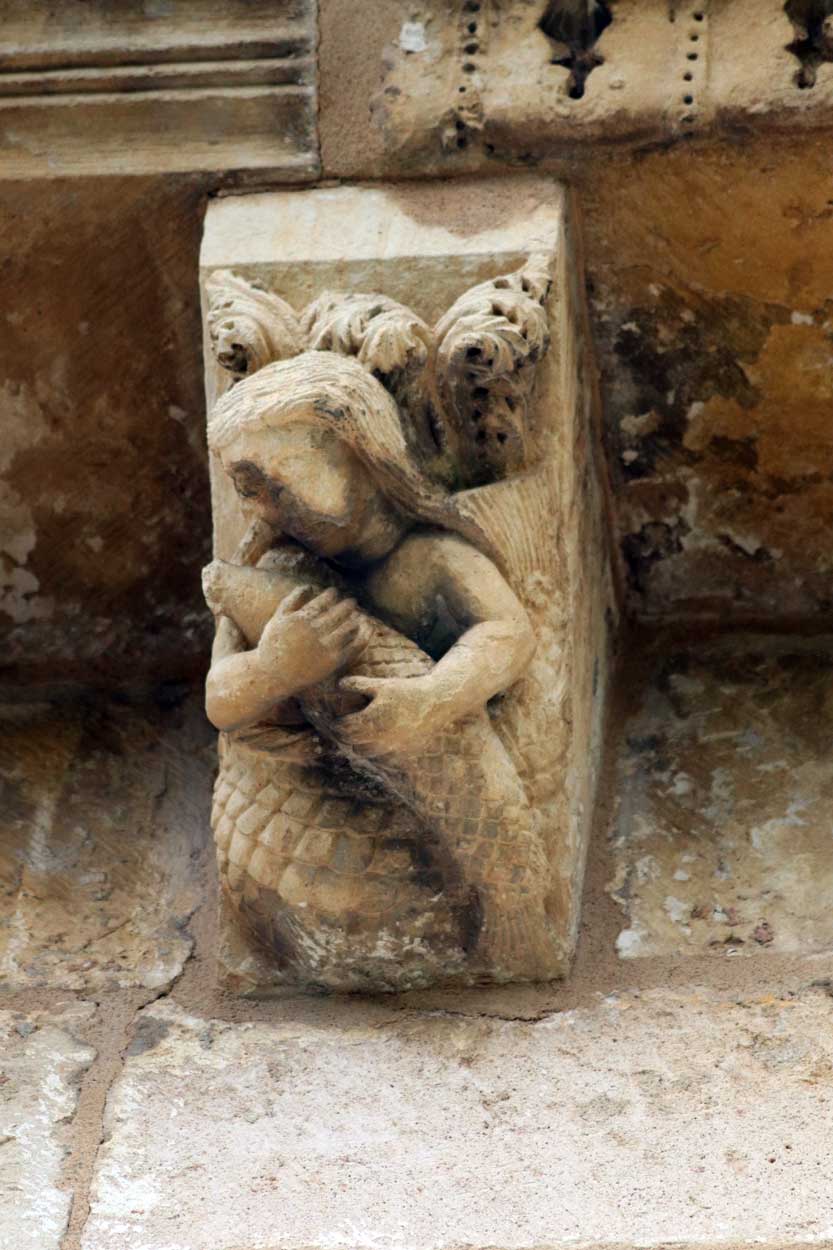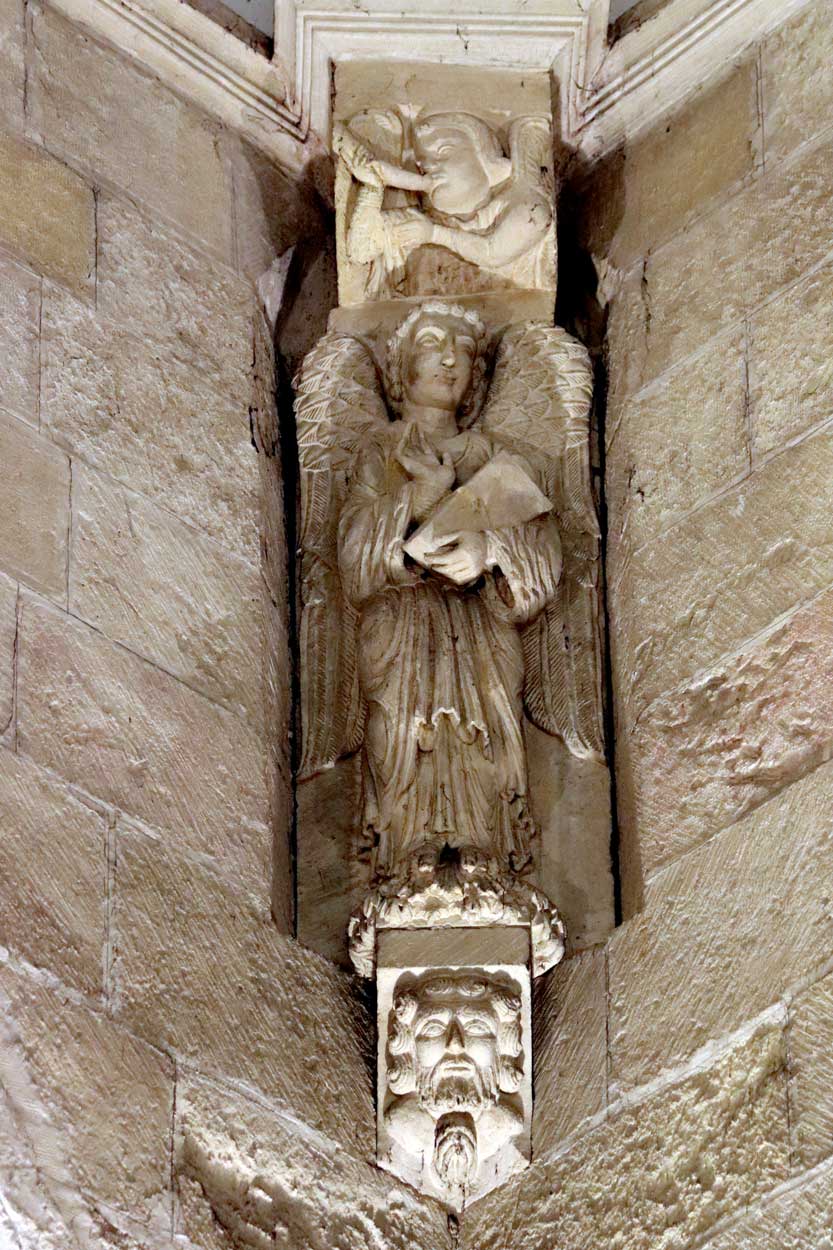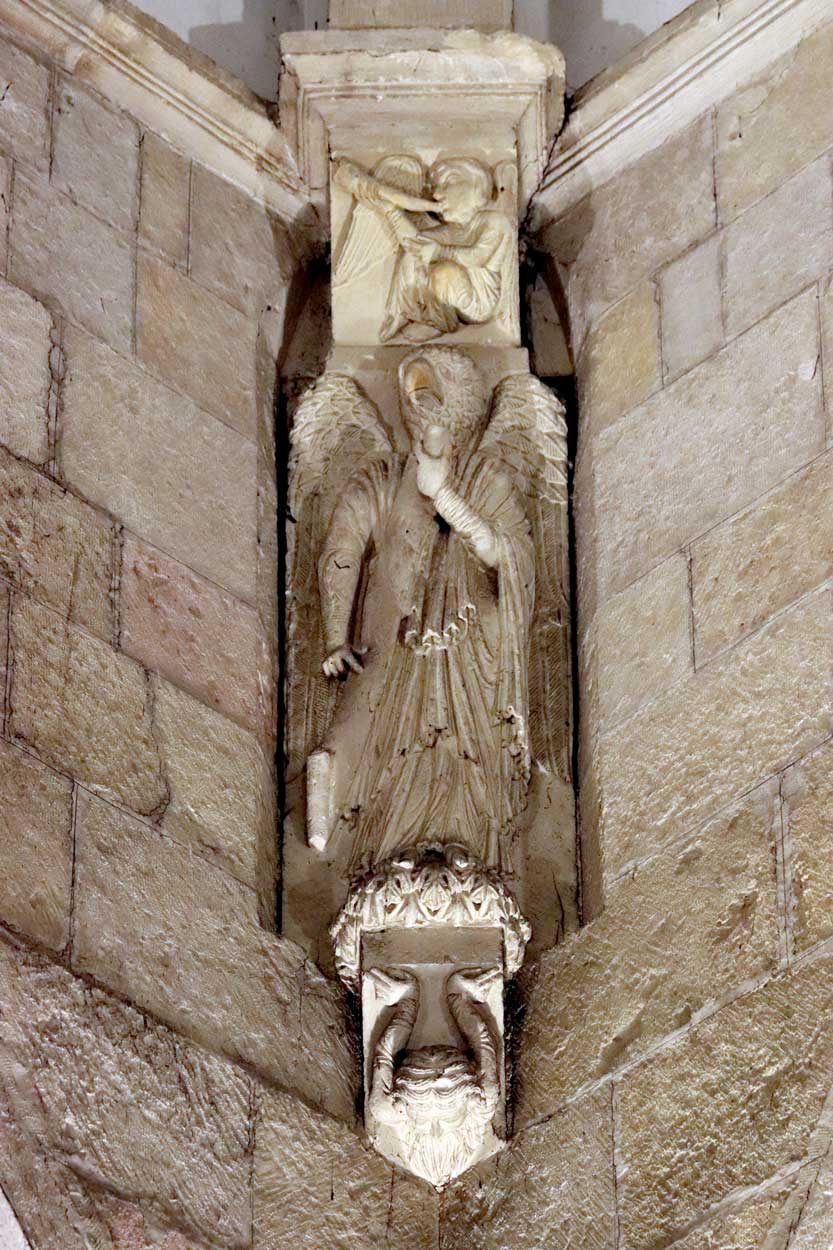
Ate digital bat ondareari irekia

Sarrera
Vitoria-Gasteizen kanpoaldean Armentiako San Prudentzio eta San Andres eliza dago, Arabako patroi den San Prudentzioren gurtzarako egoitza. XII. mendean kolegiata bezala eraikia, ondoko Gasteizeko hiribilduaren presioak bere gainbehera ekarri zuen, XVIII. mendean hondoa jo zuen arte, bere klaustroa eta ondoko guneko aretoak galduak zituen zegoeneko. 1776. urtean, seguruasko oinaldean jasotako erortzearengatik, bere itxura betirako aldatu zuen zaharberritzea egin zen. Garai honetan tenpluko arrasto erromaniko batzuk sakabanatu egin ziren, arrasto batzuk berriz ere portikoan jarriz, elementuak guztiz testuingurutik kanpo kokatu ziren. Zoritxarreko parte-hartze hau gorabehera, gaur egun Euskal Herriko tenplu erromaniko handienetarikoa izaten jarraitzen du.
Antzinako gotzaindegi arabarra
Zaila de pentsatzea Erdi Aroan Armentian katedral bat bazela. Garai loriatsu honen arrastorik mantentzen ez den arren, dokumentuek Arabako antzinako gotzaindegiaren egoitza izan zela esaten dute. Gotzaindegi honen berri daukagun lehenengo aldia 876. urtean izan zen, eta badakigu mende honen amaieran gotzaindegi honen egoitza Iruña-Veleiako antzinako hiri erromatarrean izan zela. Hala ere, Vela apezpikuaren garaian izango da, 1055 eta 1062 urteen bitartean kokatua, non Armentia apezpiku-egoitza bezala azaltzen den. Harrezkero katedral gisa funtzionatu zuen 1087. urterarte, orduan Fortunio apezpikuaren hil zen, eta sortu berria zen Calahorrako apezpikutzaren menpe geratu zen Araba. Kurioski, gaur egun ikusten dugun eliza XII. mendean eraiki zen, Armentia kolegiata gisa degradatu zuten mende bera. Horregatik ez da mantentzen jatorrizko apezpiku-egoitza.
Gaur egun ikusi ahal dugun eliza erromanikoa sakonki zaharberritu zen 1776. urtean. Harrezkero, XX. mendean zehar egindako esku-hartzeez gain, oso aldaketa gutxi izan ditu. Argazki zaharrenetan oraindik gurutzadurako ganga barrokoak ikusi ahal ditugu, ondoren orain ikusten diren Tetramorfoseko eskulturak argitara ateratzeko kendu zirenak. Berdina gertatzen da absideko behealdea ezkutatzen zuen antzinako erretaularekin. Aldi berean, jatorrizko lekuan ikusten dugu gaur egun iparraldeko gurutzaduran dagoen sagrario gotikoa, abside aldeko leiho batean kokatua dagoena. Kanpoaldean, argazkiak antzinako hilerri baten berri ematen dute, abside inguruan kokatuta zegoena, eta XX. mendean eraitsi zena.
Armentiako San Prudentzio eta San Andres eliza
Absidea
XII. mendean zehar Armentiako eliza hainbat fasetan eraiki zen. Zatirik zaharrena eta eraikitzen lehena zirkuluerdiko absidea izan zen, ikonografikoki oso bereziak diren hiru leihorekin topo egiten dugularik.
Gaur egun portiko osoan aurkitu ahal ditugun testuingururik gabeko irudiak abside aldean lan egin zuen lantegiarenak ez dira, beste batenak baizik. Arkumearen tinpanoan mantentzen den inskripzioari esker XII. mendeko irudiak bezala datatu ahal dira, bertan “Rodericus Eps” izeneko baten egiletza ematen digu, hots, Calahorrako apezpikua zen Rodrigo de Cascante, 1146-1190 urte bitartekoa. Arkumearen tinpanoa, jatorrian gaur egun galduta dagoen ate baten gainaldean kokatuta egon behar zena, zirkulu batean Agnus dei bat edo Jainkoaren arkume bat erakusten digu, Isaias eta San Joan Bataiatzailea alde banatan daudelarik. Behealdeko zerrendan krismoi bat sostengatzen duten bi aingeru ditugu, modu sinboliko batean hirutasuna errepresentatuz. Tinpano honen azpian elizgizon baten hilobi bat dago, harrizko barrote batzuen atzean.
Armentiak, dudarik gabe, Araba osoko erromanikoan aurkitu ahal diren hagaburu bildumarik hoberena dauka. Zaharberritzean lekuz aldatu egin zirenez, jatorrizko kokapena gaur egun ere ezezaguna da. Hagaburuetako irudietan alegiazko imajinarioa gailentzen da. Bertan sirenak, grifoak, harpiak, izaki hibridoak, hostoak ahotik jaurtitzen ari diren gizon adardunak… Hala ere, eguneroko pertsonaia eta animaliak ere ikusi ahal dira, esaterako, monjeak, emakumeak eta gizonak, espinario delako bat, hau da, hankatik arantza bat kentzen ari den mutil bat, hontzak, lehoiak, ahuntzak edo Erdi Aroko eraikuntza batetik ateratzen ari den gizon bat ikusi ahal dira.
Barnealdetik XVIII. mendean egin ziren aldaketa sakonak argi ikusten dira. Harlangaitz-horman egindako nabeetako murru edo ertz gangak mende hartako esku-hartze bat izan dira. Gurutzaduratik aurrerako egituran modu trebean landutako harlantzak ditugu, Erdi Aroko lantegi bati dagozkionak. Bestetik, zinborrio aldeko ganga XX. mendean berreraiki zen. Bertan hauteman daitezke gurutze latindarreko oinplanta osatzen duten bi gurutzadurak edo zirkulu erdi formako absidea, eta labe gangak. Gurutzadurako iparraldeko besoan oraindik ere ate batzuk ikusi ahal dira, baita jatorrian antzinako koro eta atxikia zegoen klaustrorako sarbidea ere, 1776. urtean guztiz suntsitu zena.
Jatorrizko koroa sostengatzen zutenetatik bi zutabeetako kapitelak besterik ez daude. Egun elizaren oinaldean ikusi ahal dira. Hauetan piztiak errepresentatzen dira. Bat astakumeak jaten ari den bitartean, munstro aurpegi batzuk kapitelaren erdi-erdian daude, hauetako bat hankak besterik ikusten ez zaizkion gizaki bat irensten ari delarik.
Gurutzaduran kalitate handiko landare kapitel batzuk ditugu, non grifo edo arranoak bezalako animaliak txandakatzen diren. Hauetatik deigarriena, dudarik gabe, zera da, zentauro eta zaldun batzuen arteko borroka irudikatzen duen eszena konplexua, orbel eta landaredi oparo batean.
XVIII. mendeko zaharberritzeak gurutzaduran kokatzen zen ganga faltsuaren atzean kalitate handiz landutako lau eskultura estali zituen. 1870. urtean parrokoak gangen gainean hauen berri eman zuen. 1904 eta 1908 urteen bitartean zinborrioan eraberritze baten ondorioz atzera agerian geratu ziren. Lau eskultura hauek lau ebangelisten edo Tetramorfosaren errepresentazioak dira, bakoitzaren animaliekin batera. Zezena Lukas da, arranoa Juan, lehoia Markos eta azkenik aingerua Mateori egokitzen zaio. Hauen gainean lau aingeru tronpetalari ditugu munduko lau puntu kardinaletara ebangelio berria iragarriz. Behealdean, mentsula funtzioa betetzen, lau gizonezkoen errepresentazioak ditugu.
Bataiarriak bere sendotasun eta soiltasunarengatik harritzen du. Kopa karratuaren forma dauka, Araban gutxitan ikusten dugun tipologia. Dekorazioa izkinetan ferraketan inspiratuta dago eta arkuteria forma dauka koparen ertz eta harroinetan. Behealdean erlaitz baten arrastoak ikusi ahal ditugu, portikoan lan egin zuten lantegi berdinarenak. Bertan roleoak ez ezik, hegaztiak, harpiak eta herensugeak ere antzematen ditugu.
De las fotografías actuales: © Alava Medieval / Erdi Aroko Araba
De las fotografías antiguas: Archivo Municipal de Vitoria-Gasteiz / Interior de Armentia, tomado de: Manuel Díaz de Arcaya, Armentia, su basílica y su obispado, 1901.



